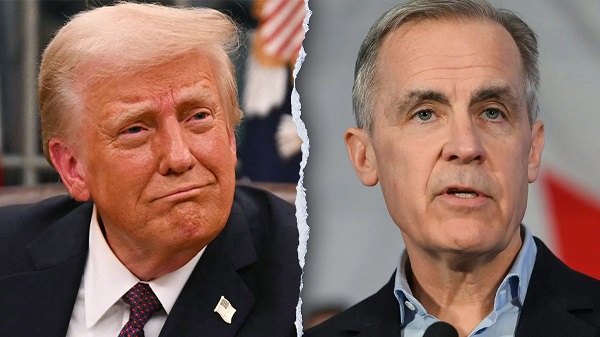News
Alberta just created the world’s largest boreal protected forest.. right next to the oil sands!

From the Province of Alberta
|
The largest contiguous area of boreal protected land in the world has been established in northern Alberta. The Government of Alberta partnered with The Government of Canada, the Tallcree First Nation, Syncrude and the Nature Conservancy of Canada (NCC) on the conservation of more than 6.7 million hectares (67,000 sq. km) of boreal forest. The creation of the Kazan, Richardson and Birch River wildland provincial parks connects the federal government’s Wood Buffalo National Park to other existing wildland provincial parks. The new and expanded wildland provincial parks are: Kazan, Richardson, Dillon River, Birch River and Birch Mountains. In total, these northern Alberta parks contribute more than 1.36 million hectares to the province’s protected area network. This is the largest addition to the Alberta Parks system in its history, and will constitute the largest contiguous protected boreal forest in the world under the guidelines of the International Union for Conservation of Nature.
Identified in the Lower Athabasca Regional Plan (LARP) in 2012, the new parks were fully reviewed to ensure there are no economic impacts on natural resource industries or communities. Industry tenures in the parks were compensated years ago, leaving the lands free for protection. For the five new and expanded wildland provincial parks, the Government of Alberta proposes to enter into cooperative management arrangements with Indigenous communities. Indigenous advice and knowledge will inform decision-making and management of these lands and the province will provide resources to support this process.
In addition, Alberta plans to integrate an Indigenous Guardian Program into these wildland provincial parks. Under this program, First Nations and Metis peoples will be hired to monitor the areas, help maintain the lands and provide education and outreach to park visitors.
Treaty 8’s Tallcree First Nation, in cooperation with the NCC and the Alberta and federal governments and with support from Syncrude, generously relinquished their Birch River area timber licence and quota to enable one of the new parks (Birch River WPP) to proceed. The Government of Alberta thanks the Tallcree First Nation for working with the government and the NCC to achieve this historic outcome. Alberta and the Tallcree First Nation have agreed to manage the Birch River WPP with mutual benefit toward conservation and economic opportunities.
In addition, the environmental benefits created through the establishment of the Birch River WPP will provide conservation offsets that Syncrude can apply towards future industrial activities.
Establishing the wildland provincial parks (WPPs) will mean a protected area that is more than twice the size of Vancouver Island (32,000 sq. km), slightly smaller than the province of New Brunswick (72,908 sq. km), slightly bigger than the Great Bear Rainforest in British Columbia (64,000 sq. km), and 10 times the size of the Greater Toronto Area (7,124 sq. km). Background
|
International
UK Supreme Court rules ‘woman’ means biological female

Susan Smith (L) and Marion Calder, directors of ‘For Women Scotland’ cheer as they leave the Supreme Court on April 16, 2025, in London, England after winning their appeal in defense of biological reality
From LifeSiteNews
By Michael Haynes, Snr. Vatican Correspondent
The ruling, in which the court rejected transgender legal status, comes as a victory for campaigners who have urged the recognition of biological reality and common sense in the law.
The U.K. Supreme Court has issued a ruling stating that “woman” in law refers to a biological female, and that transgender “women” are not female in the eyes of the law.
In a unanimous verdict, the Supreme Court of the United Kingdom ruled today that legally transgender “women” are not women, since a woman is legally defined by “biological sex.”
Published April 16, the Supreme Court’s 88-page verdict was handed down on the case of Women Scotland Ltd (Appellant) v. The Scottish Ministers (Respondent). The ruling marks the end of a battle of many years between the Scottish government and women’s right campaigners who sought to oppose the government’s promotion of transgender ideology.
In 2018, the Scottish government issued a decision to allow the definition of “woman” to include men who assume their gender to be female, opening the door to allowing so-called “transgender” individuals to identify as women.
This guidance was challenged by women’s rights campaigners, arguing that a woman should be defined in line with biological sex, and in 2022 the Scottish government was forced to change its definition after the court found that such a move was outside the government’s “legislative competence.”
Given this, the government issued new guidance which sought to cover both aspects: saying that biological women are women, but also that men with a “gender recognition certificate” (GRC) are also considered women. A GRC is given to people who identify as the opposite sex and who have had medical or surgical interventions in an attempt to “reassign” their gender.
Women Scotland Ltd appealed this new guidance. At first it was rejected by inner courts, but upon their taking the matter to the Supreme Court in March last year, the nation’s highest judicial body took up the case.
Today, with the ruling issued against transgender ideology, women’s campaigners are welcoming the news as a win for women’s safety.
“A thing of beauty,” praised Lois McLatchie Miller from the Alliance Defending Freedom legal group.
“They looked at the whole argument, not just who goes in what bathroom and trans women. This is going to change organizations, employers, service providers,” Maya Forstater, chief executive of Sex Matters, told the Telegraph. “Everyone is going to have to pay attention to this, this is from the highest court in the land. It’s saying sex in the Equality Act is biological sex. Self ID is dead.”
“Victory,” commented Charlie Bently-Astor, a prominent campaigner for biological reality against the transgender movement, after she nearly underwent surgical transition herself at a younger age.
“After 15 years of insanity, the U.K. Supreme Court has ruled that men who say they are ‘trans women’ are not women,” wrote leader of the Christian political movement David Kurten.
Leader of the Conservative Party – the opposition to the current Labour government – Kemi Badenoch welcomed the court’s ruling, writing that “saying ‘trans women are women’ was never true in fact and now isn’t true in law, either.”
Others lamented the fact that the debate even was taking place, let alone having gone to the Supreme Court.
“What a parody we live in,” commented Reform Party candidate Joseph Robertson.
Rupert Lowe MP – who has risen to new prominence in recent weeks for his outspoken condemnation of the immigration and rape gang crisis – wrote, “Absolute madness that we’re even debating what a woman is – it’s a biological fact. No amount of woke howling will ever change that.”
However, the Supreme Court did not wish to get pulled into siding with certain arguments, with Lord Hodge of the tribunal stating that “we counsel against reading this judgment as a triumph of one or more groups in our society at the expense of another. It is not.”
The debate has taken center stage in the U.K. in recent years, not least for the role played by the current Labour Prime Minister Keir Starmer. Starmer himself has become notorious throughout the nation for his contradictions and inability to answer the question of what a woman is, having flip-flopped on saying that a woman can have a penis, due to his support for the transgender movement.
At the time of going to press, neither Starmer nor his deputy Angela Rayner issued a statement about the Supreme Court ruling. There has been no statement issued from the Scottish government either, nor from the office of the first minister.
Transgender activists have expectedly condemned the ruling as “a disgusting attack on trans rights.” One leading transgender campaigner individual told Sky News, “I am gutted to see the judgement from the Supreme Court which ends 20 years of understanding that transgender people with a GRC are able to be, for all intents and purposes, legally recognized as our true genders.”
International
Tulsi Gabbard tells Trump she has ‘evidence’ voting machines are ‘vulnerable to hackers’

From LifeSiteNews
By Stephen Kokx
Last month, Trump signed an executive order directing federal election-related funds to be conditioned on states “complying with the integrity measures set forth by Federal law, including the requirement that states use the national mail voter registration form that will now require proof of citizenship.”
Director of National Intelligence Tulsi Gabbard announced during a Cabinet meeting last week at the White House that voting machines across the U.S. are not secure.
“We have evidence of how these electronic voting systems have been vulnerable to hackers for a very long time, and vulnerable to exploitation to manipulate the results of the votes being cast,” she said about a half hour into the meeting.
Gabbard’s remarks confirm what millions of Americans have long suspected about elections across the U.S.
President Donald Trump himself has maintained skepticism of current voting methods and has called for paper ballots to prevent cheating.
MyPillow CEO Mike Lindell was one of only a few voices to publicly argue that voting machines, like those run by Dominion and Smartmatic which were used during the 2020 presidential election, were compromised. GOP Congresswoman Marjorie Taylor-Greene took to X to praise the businessman after Gabbard made her remarks.
“Mike Lindell along with MANY others vindicated!!” she exclaimed on X. “Another conspiracy theory being proven right! Guess what Democrats already knew this and publicly talked about it in 2019! And then lied and lied and lied!!!”
Last month, Trump signed an executive order directing federal election-related funds to be conditioned on states “complying with the integrity measures set forth by Federal law, including the requirement that states use the national mail voter registration form that will now require proof of citizenship.”
Congress has also taken steps to ensure election integrity by voting on the Safeguard American Voter Eligibility Act (also known as the SAVE Act) last week. Dubbed “controversial” by the media and left-wing groups, the common sense bill would require persons to show proof of citizenship before voting. The House approved the measure 220-208 with four Democrats in support. The bill now heads to the Senate where it will face an uphill battle for the required 60 votes. Republicans currently have a 53 seat majority.
Gabbard told Trump at the meeting that the evidence she found “further drives forward your mandate to bring about paper ballots across the country so that voters can have faith in the integrity of our elections.”
-

 2025 Federal Election1 day ago
2025 Federal Election1 day agoNeil Young + Carney / Freedom Bros
-

 2025 Federal Election16 hours ago
2025 Federal Election16 hours agoTucker Carlson Interviews Maxime Bernier: Trump’s Tariffs, Mass Immigration, and the Oncoming Canadian Revolution
-

 2025 Federal Election15 hours ago
2025 Federal Election15 hours agoCanada drops retaliatory tariffs on automakers, pauses other tariffs
-

 espionage8 hours ago
espionage8 hours agoEx-NYPD Cop Jailed in Beijing’s Transnational Repatriation Plot, Canada Remains Soft Target
-

 2025 Federal Election1 day ago
2025 Federal Election1 day agoBureau Exclusive: Chinese Election Interference Network Tied to Senate Breach Investigation
-

 COVID-191 day ago
COVID-191 day agoCanadian student denied religious exemption for COVID jab takes tech school to court
-

 Business16 hours ago
Business16 hours agoDOGE Is Ending The ‘Eternal Life’ Of Government
-

 2025 Federal Election2 days ago
2025 Federal Election2 days agoMEI-Ipsos poll: 56 per cent of Canadians support increasing access to non-governmental healthcare providers























